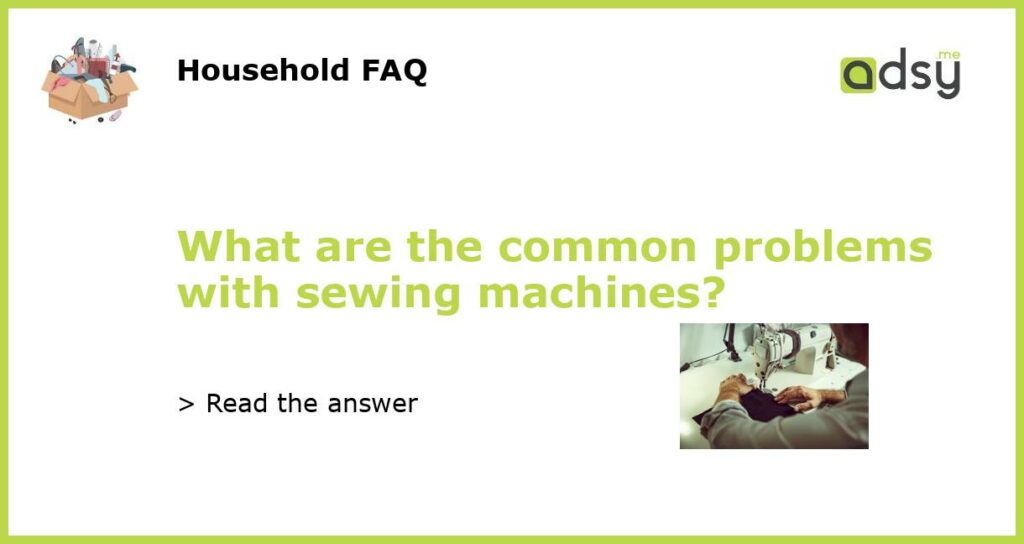Thread Jamming and Tangling
One common problem that many sewers encounter with their sewing machines is thread jamming and tangling. This occurs when the thread gets caught in the machine’s mechanisms, resulting in a messy and tangled mess that can be frustrating to untangle.
The most common cause of thread jamming and tangling is using the wrong type or weight of thread for the project. It’s important to use the appropriate thread for the fabric being sewn and adjust the tension accordingly. Additionally, using a dull or bent needle can also cause thread jamming, so it’s important to regularly check and replace your needles.
To prevent thread jamming and tangling, make sure to use the correct thread and needle for your fabric, and ensure that your machine is well-maintained and cleaned regularly to remove any lint or debris that may be causing issues.
Breaking Needles
Another common problem with sewing machines is breaking needles. This can be caused by a variety of reasons, including using the wrong needle for the fabric, sewing too quickly or forcefully, or simply using a worn-out needle.
Using the wrong needle can result in the needle not being able to pierce through the fabric properly, causing it to break. Similarly, sewing too quickly or forcefully can put extra strain on the needle, causing it to snap. Lastly, using a dull or worn-out needle can also lead to breakages.
To prevent needle breakages, make sure to use the appropriate needle for your fabric, sew at a steady pace, and replace your needles regularly to ensure they are sharp and in good condition.
Uneven Stitching
Uneven stitching is another common problem that sewers may encounter with their machines. This can occur when the machine is not properly threaded or the tension is not adjusted correctly.
When the machine is not threaded correctly, the stitches may be loose or uneven, resulting in an unprofessional-looking finish. Similarly, if the tension is too tight or too loose, it can cause the stitches to be uneven or puckered.
To fix uneven stitching, make sure the machine is properly threaded and the tension is adjusted correctly. It may also be helpful to test the stitch length and tension on a scrap piece of fabric before starting your project to ensure everything is working properly.
Machine Not Feeding the Fabric
Another common problem with sewing machines is when the machine does not properly feed the fabric through. This can result in the fabric not moving smoothly or evenly, leading to skipped stitches or puckering.
This issue often occurs when the machine’s feed dogs are not working correctly or have become worn out. The feed dogs are responsible for moving the fabric through the machine as you sew. If they are not functioning properly, the fabric may not be fed through evenly, causing issues.
To address this problem, check that the feed dogs are clean and free from any obstructions or lint buildup. If they appear to be worn or not moving as they should, they may need to be adjusted or replaced by a professional technician.
Machine Not Turning On
Lastly, a common problem that sewers may encounter with their sewing machines is the machine not turning on. This can be caused by a variety of reasons, including a loose or faulty power cord, a blown fuse, or a problem with the machine’s internal wiring.
If your machine is not turning on, start by checking that the power cord is securely plugged in and that there are no visible signs of damage. If the power cord appears to be fine, it may be worth checking the fuse or circuit breaker to ensure it has not blown.
If these steps do not resolve the issue, it may be best to consult a professional sewing machine technician to diagnose and repair any internal wiring problems that may be preventing the machine from turning on.






